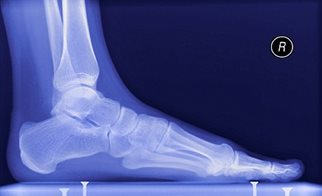Playing is Learning
The Human Feet
June 17th, 2015
| Ads | ||
|
Play the Challenge
|
||
|
A New Word is Coined A new Character is revealed A new Game is Afoot |
An Edutainment Adventure Based on Three Rounds of Investigations
|
|
|
Welcome to the World of PROFESsee™by seeCOSM™ PROFESsee™ is my title. I am the perpetual learner, in pursuit of knowledge, wisdom and truth. I derived my name from professor |
 |
|
|
Just like it is obvious even by a mere glance at the feet, they come handy with a lot of bones. The fact still remains that because of the function of the human feet, nature makes it that they have the imperative of having the highest number of and strongest bones in the body. Of course, the weight and mass of all other bones rest on that of the feet. They carry the weight of the body, so they are naturally supposed to have stronger and numerous bones. Apart from carrying the weight of the body, the bones of the feet also are very flexible, resilient and durable. The human feet are made up of three different bones. These include the Forefoot that contains the Phalanges and metatarsal bones. The next is the Mid foot, which has the lesser tarsal bones. There are also the greater tarsal bones. The foot has fourteen phalanges and five metatarsals. There is the proximal phalanx, which is located at the base of the toe, and which has the function of articulating the metatarsal and the middle phalanx. The middle phalanx connects the distal phalanx with the toes. The distal phalanx is located at the end of every toe, and it forms the tip of all toes. The five metatarsals located on each foot perform a sort of invaluable function in the body. These functions includes forming part of the arch of the foot, serving as a very important and major shock absorber for the foot, and helping in transforming the weight that comes to the foot. They also help in bearing the weight that is presented by the body, especially when the toe performs the functions of running and walking. The lesser tarsal makes up the five bones that are found at the mid foot. These bones work in unison with the forefoot and hind foot. Their main function is to transfer weight from one of the aforementioned to the other during movements. The hind foot, which is normally called the greater tarsal, has the function of connecting the foot to the leg. This is done at the joint of the ankle. Here, you get the large talus and calcareous. Their main function is that of connectivity. They articulate through the subtalar joint and go into joint functions of linking the hindfoot and midfoot at the tarsal joint. Can you Assemble the human foot? Image courtesy of: http://www.dailymail.co.uk/health/article-2035964/If-youve-injured-foot-need-RICE-Rest-Ice-Compression-Elevation.html |
||
Latest News / Events
E-mail [email protected]
The Professee™ Newsletter Beta
http://www.seecosm.com/
http://www.seecosm.com/

